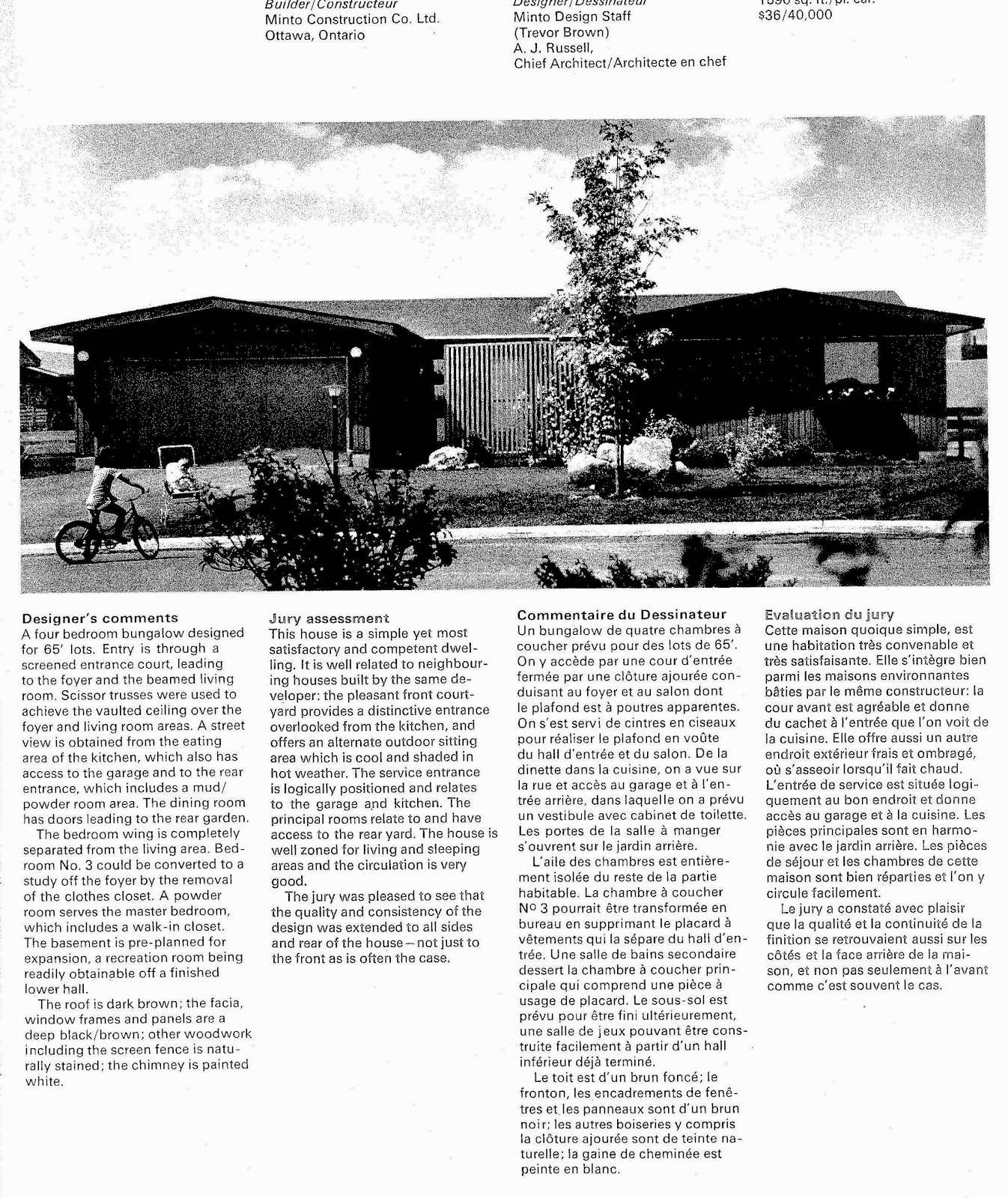The original version of this post was published 4 years ago, but it actually ties in quite well with my current academic research on how homeowners change the facades of their houses. I have updated some aspects, including more before/after images of the award homes. Also, the original post just focused on the award homes built by Minto, but I have added a Teron award-home at the end of this post.
During the 1960s and 1970s a handful of Ottawa builders won numerous Canadian Housing Design Council awards for their house designs.
For the awards, builders entered one particular house built from their plans. I was curious to see how these award-winning houses stood the test of time, so I searched the addresses on Google Street View to see what they look like now. Many look almost the same, but some have changed over the years - some dramatically.
During the 1960s and 1970s a handful of Ottawa builders won numerous Canadian Housing Design Council awards for their house designs.
For the awards, builders entered one particular house built from their plans. I was curious to see how these award-winning houses stood the test of time, so I searched the addresses on Google Street View to see what they look like now. Many look almost the same, but some have changed over the years - some dramatically.
 |
| 1974 |






















































Comments
Post a Comment